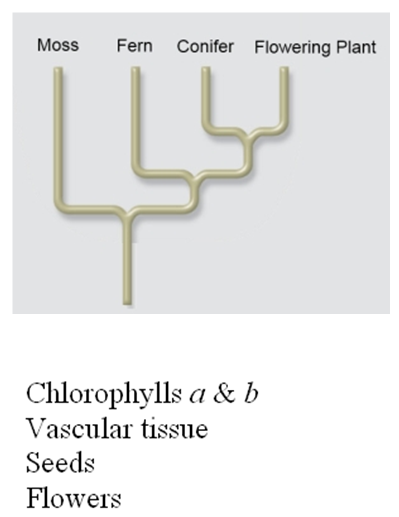The size of a population is affected by all of the
following EXCEPT
a. biotic potential.
b. trophic level.
c. carrying capacity of the environment.
d. death rate.
e. birth rate.
Answer: b
You might also like to view...
The correct sequence of events in the development of chordates is _____
A) cleavage, gastrulation, organogenesis, and then formation of a blastula B) gastrulation, formation of a blastula, cleavage, and then organogenesis C) cleavage, formation of a blastula, gastrulation, and then organogenesis D) gastrulation, organogenesis, formation of a blastula, and then cleavage
Based on what you know about the principle of parsimony, which of the following is most likely a symplesiomorphy of mosses, ferns, conifers, and flowering plants?
Given the following cladogram and list of characteristics:

A. Chlorophylls a and b
B. Vascular tissue.
C. Seeds.
D. Flowers.
E. Both chlorophylls a and b and seeds.
Which of the following is true regarding primary growth in a plant?
a. Primary growth increases the height of a plant. b. Primary growth results in woody tissue. c. Primary growth arises from apical meristems. d. All the above are true. e. Only a and c are true.
Sulfate-reducing bacteria (SRB) are very important in the cycling of sulfur within ecosystems because significant amounts of sulfate are present in almost all aquatic and terrestrial habitats, making SRB widespread and active.
Answer the following statement true (T) or false (F)